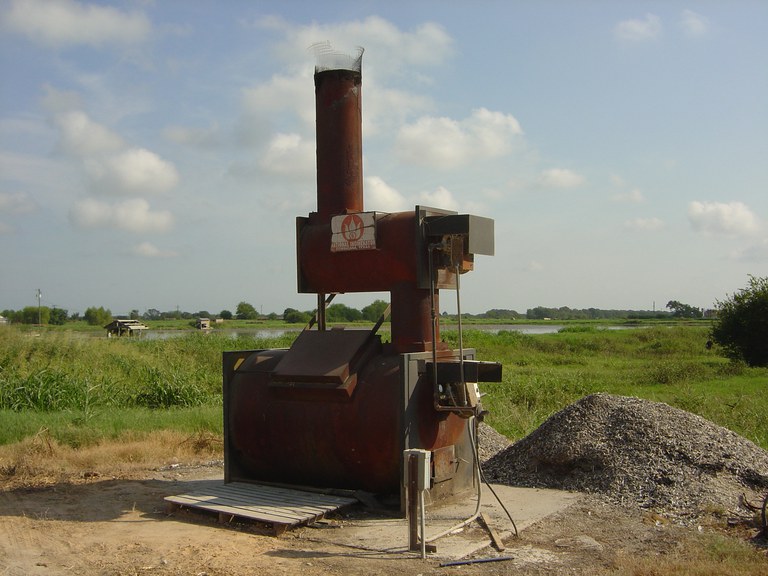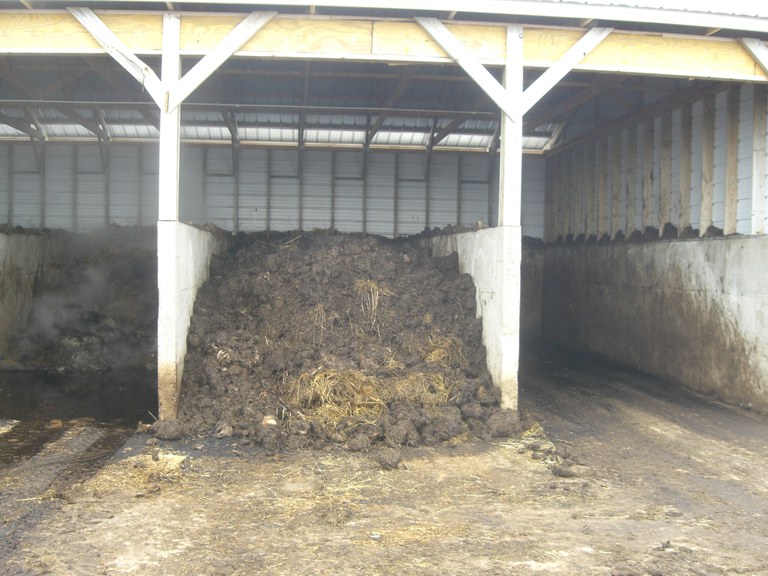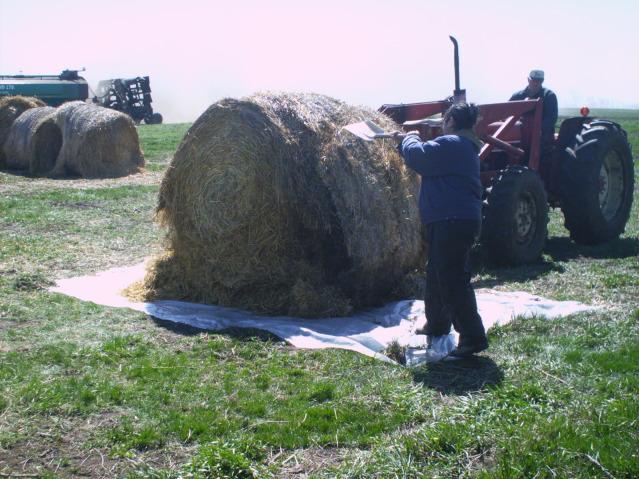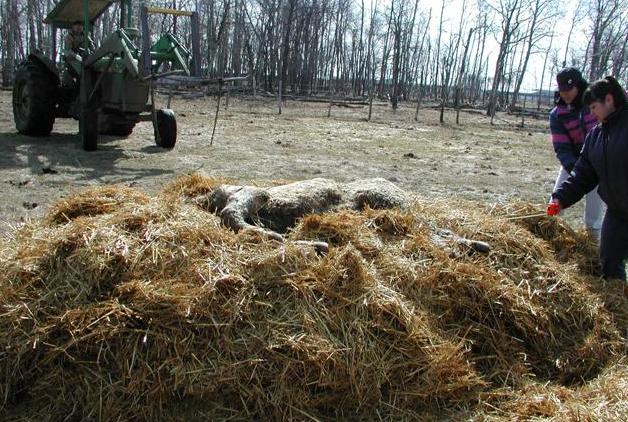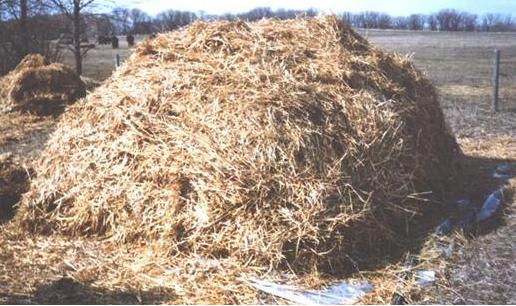Auvermann, B., Mukhtar, S., and Heflin, K. 2006. Composting large animal carcasses. Texas Cooperative Extension Bulletin, The Texas A&M University System, E-422
Berg, M., Brummund, P., Harstad, A., and Nester, P. 2015. 5 easy steps for composting dead livestock. NDSU Extension Service publication AS1781.
Flory, G.A., Peer, R.W., and Malone, G.W. Guidelines for in-house composting poultry mortality as a rapid response to avian influenza. Virginia Coperative Extension.
Fonstad, T.A., Meier, D.E., Ingram, L.J., and Leonard, J. 2003. Evaluation and demonstration of composting as an option for dead animal management in Saskatchewan. Canadian Biosystems Engineering. 45: 6.19 - 6.25.
Glanville, T.D., Ahn, H.K., Richard, T.L., Shiers, L.E., and Harmon, J.D. 2009. Soil contamination caused by emergency bio-reduction of catastrophic livestock mortalities. Water Air Soil Pollution. 198: 285-295.
Hao, X., Chang, C., Larney, F.J., and Travis, G.R. 2001. Greenhouse gas emissions during cattle feedlot manure composting. Journal of Environmental Quality. 30: 376-386.
Keener, H.M., Elwell, D.L., and Monnin, M.J. 2000. Procedures and equations for sizing of structures and windrows for composting animal mortalities. Applied Engineering in Agriculture. 16: 681-692.
Mukhtar, S., Nash, C., Harman, W., and Padia, R. 2008. How much does that incinerator cost? AgriLife Extension Bulletin, Texas A&M University, B-6209.
Rynk, R.F. 1992. On-farm composting handbook/editor: Robert Rynk [et al.]. Ithaca, N.Y.: Northeast Regional Agricultural Engineering Service (NARES).
Stoltenow, C.L., and Hammer, C.J. 2009. Anthrax. NDSU Extension publication V561.
Turan, N.G., Akdemir, A., and Ergun, O.N. 2007. Emission of Volatile Organic Compounds during Composting of Poultry Litter [electronic resource]. Water, Air, and Soil Pollution. 184(1-4): 177-182.
USDA-HPAI 2016. Mortality composting: carbon sources for windrow construction.
U.S. Food and Drug Administration.
Wilkinson, K.G. 2007. The biosecurity of on-farm mortality composting. Journal of Applied Microbiology. 102(3): 609-618.
Xu, S., Hao, X., Stanford, K., McAllister, T., Larney, F.J., and Wang, J. 2007. Greenhouse gas emissions during co-composting of calf mortalities with manure. Journal of Environmental Quality. 36: 1914-1919.
Xu, W., Reuter, T., Inglis, G.D., Larney, F.J., Alexander, T.W., Guan, J., Stanford, K., Xu, Y., and McAllister, T.A. 2009. A biosecure composting system for disposal of cattle carcasses and manure following infectious disease outbreak. Journal of Environmental Quality. 38: 437-450.
This publication was authored by Shafiqur Rahman, associate professor, NDSU; Teresa Dvorak, former NDSU area livestock nutrient management specialist; Charlie Stoltenow, NDSU Extension Service assistant director, agriculture and natural resources; and Saqib Mukhtar, former associate professor, Texas AgriLife Extension, 2009.
September 2017
